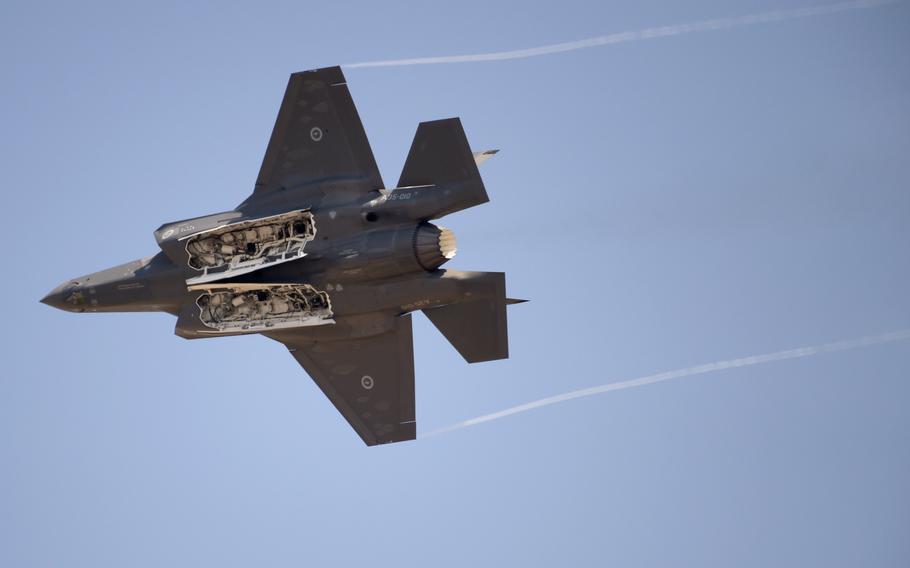
All versions of the F-35, the world’s costliest weapons program, have failed to meet minimum combat readiness rates for six straight years, according to the Government Accountability Office. (Carla Gottgens/Bloomberg)
All versions of the F-35, the world’s costliest weapons program, have failed to meet minimum combat readiness rates for six straight years, according to the watchdog agency for Congress.
That’s despite the Army, Navy and Marine Corps spending $12 billion, or about 21%, of $57.2 billion for aircraft operations and maintenance appropriated by Congress during that time on the fighter jet built by Lockheed Martin Corp., according to a Government Accountability Office tally released Monday.
The F-35s of all three services didn’t reach their “mission capable rates in any of the years we reviewed,” from October 1, 2017 through September 30, 2023, according to the congressionally mandated assessment.
The “mission capable” rate is the percentage of time an aircraft in a squadron can fly and perform at least one of its assigned missions. More than 1,000 F-35s have been delivered to the U.S. military and international partners in a program projected to produce more than 3,000 of the stealthy aircraft. The first F-35s were declared operational in 2015 by the Marine Corps. The Air Force followed in 2016 and the Navy in 2019.
The new assessment doesn’t provide specific target readiness percentages, but a March 2023 GAO report said the objective for the Air Force’s F-35A is 90%, while those for the Marines F-35B and the Navy’s F-35C are 85%.
“The F-35’s poor mission capable rates were due partly to challenges with depot and organizational maintenance,” the audit found.
A GAO report in September 2023 said the F-35 fleet’s mission capable rate in March of that year was about 55%.
Acknowledging the problem, Air Force Lieutenant General Michael Schmidt, the F-35 program manager, initiated a “War On Readiness” last year to improve the F-35’s mission capable rate.
The GAO reviewed readiness trends of U.S. fighters — including the F-35 — against the operations and maintenance dollars spent. “Mission capable rates for tactical aircraft have generally not met service goals for several years” because of issues “such as aging aircraft, maintenance challenges and supply support issues,” the agency found.
©2024 Bloomberg L.P.